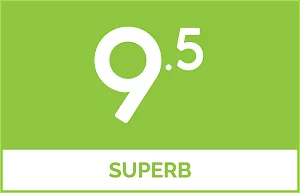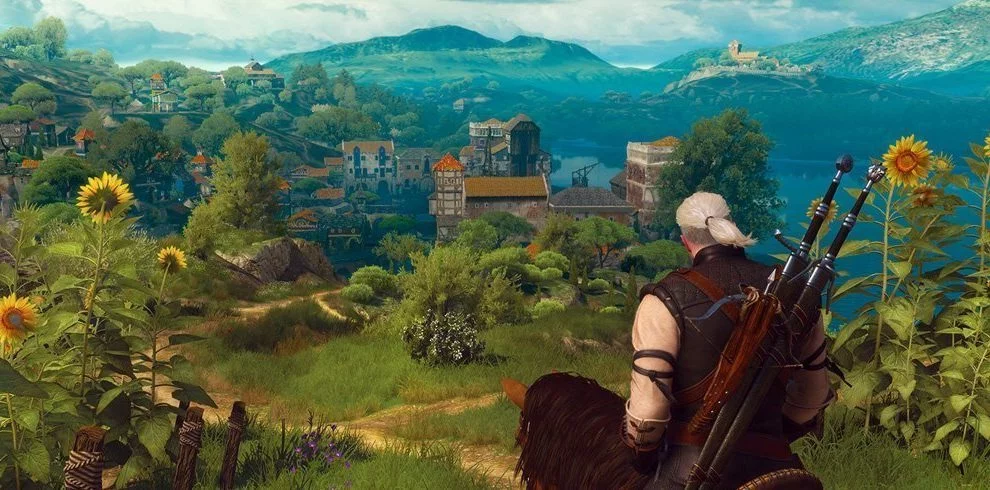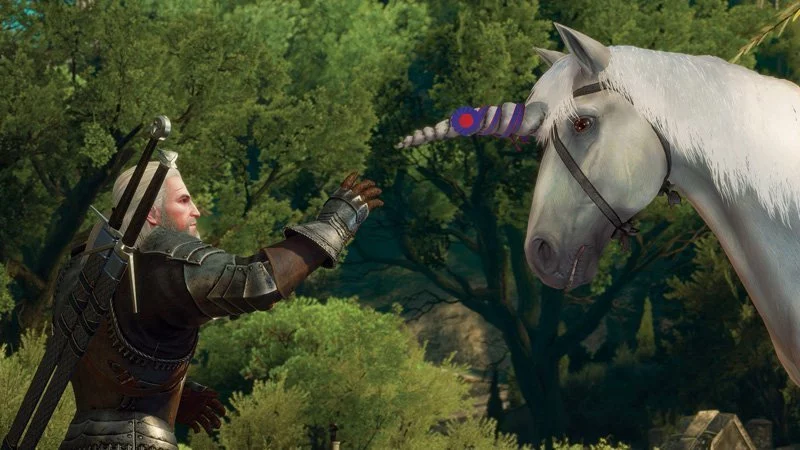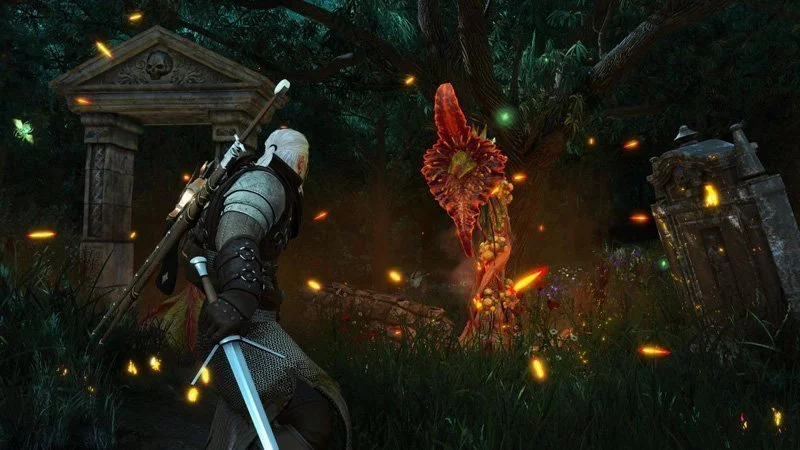Last week’s The Witcher 3 Blood and Wine expansion is a bittersweet proposition. It’s an amazing expansion to the game – and make no mistake, this fits the classification of ‘expansion’ in a way very few DLC do in the modern gaming landscape – but it’s also our last outing with CD Projekt Red’s version of Geralt of Rivia. It’s a good thing then, that this last outing is a marathon rather than a sprint. Welcome to the land of Toussaint.
“Blood and Wine” takes place in the newly-added region of Toussaint – a picturesque and mountainous duchy inspired by southern France. Called to the area by a contract issued by its Duchess, Anna Henrietta – a former contact of Geralt’s. A mysterious beast is stalking and killing famed knights in the city of Beauclair, and it’s up to the surly witcher to figure out what it is and how to stop it. Investigating the Beast of Beauclair opens up a greater mystery that Geralt and co. must unravel to return Toussaint to its picture-perfect state once more.
Much like previous DLC, Heart of Stone, this expansion also contains a central narrative thread as well as various Witcher contracts, scavenger hunts and side-quests. The biggest difference in the execution of this is that Blood and Wine takes place in an entirely new area, rather than being bolted on to the main zone of the vanilla game. Toussaint is WILDLY different to any other location presented in The Witcher 3; while it is described in promotional materials as a ‘region untouched by war’, nothing sells this more than the colour palette. Toussaint is a farming and winemaking ragion, where the sky is always an iridescent blue that contrasts sharply against the lush greens of the hills and grapevines. Gone is the relatively muted tones of the main game’s Novigrad, Velen and White Orchard, replaced with a level of vibrance that I still hadn’t fully adjusted to, after over a dozen hours of play. This uptick on colour saturation carries over to the characters and cities in and around Beauclair, standing in stark contrast to the darker tones of almost all of Geralt’s gear.
Noth that he has to stay that way, of course – one of several additions made in “Blood and Wine” is the ability to customer the appearance of your witcher gear. With material dyes being a big part of Beauclair’s economy, you’ll soon gain access to a rainbow of dyes to spruce up that musty old armour as you cut a swath of death through the flora and fauna that threaten the human population. Has your White Wolf always wished he was the prettiest pink-and-purple contract killer? Easily arranged. Change your mind? No dyes are permanent, and they can be removed at any time.
Not all the new mechanics introduced here are cosmetic. Early in the main questline you can gain access to formulas that allow you to convert the three mutagen colours that allow you to augment your skills and abilities. If you’re anything like me you had a near-infinite supply of green mutagens, but found next to no reds throughout the entire base game. With a few extra ingredients you can now shift from one colour to another as necessary, to then augment your Geralt in the freshly-redesigned menus introduced in the game’s 1.20 patch.
Explore some side content and you’ll also gain access to top-tier mutations, freshly added to the game. These allow even greater modifications to your combat, Sign and alchemy abilities which are a welcome wrinkle to the game for those who have played through all the previous content. Being able to modify your approach to combat – such as having your Aard/’Force Push’ Sign freeze and potentially shatter enemies it hits – adds a freshness to combat that can be sorely needed when you’re creeping up to (or speeding away from) the 100-hour mark. Pair this with a selection of new ‘Grandmaster’-tier gear upgrades that add collective bonuses when used in concert, and you’ve got a fresh breeze of content to keep fights feeling exciting.
Complementing this is what I found personally to be the strongest standout of the DLC. It wasn’t the fresh locale or colour scheme, but rather the direction of the game that got me most enthused about the DLC’s main quest line. It may be that it was the case in the main game, but the distance between then and this DLC really made it stand out — cutscenes seem to have a cinematic flair that I don’t recall from The Witcher 3 or the more recent Hearts of Stone. Establishing shots for conversations, impressive action shots and dynamic camera angles are in abundance as you chew through both the main quest line and its side content. One short mission in the Cianfanelli Bank in particular, stood out to me as quietly funny in how its cutscenes were structured.
And once again, comedy is something that CD Projekt Red trades in effortlessly. The usual referential humour is in place of course – I’ve spotted a thinly-veiled reference to a certain angry TV chef, and another nod as explicit as The Witcher 3’s ‘Defensive Regulatory Magicon” tower – but the low-key humour returns in full force for Geralt too. His dry humour in dialogue is always great to see, as are the little visual tics as he rolls his eyes or sighs in response to the characters he’s playing opposite. This third game has added a new depth to Geralt as a protagonist, and more than ever this is demonstrated in “Blood and Wine”. Geralt swings from cold mercenary to good Samaritan, even playing into his perception as a monster as the situation dictates. Seeing him in such top form really adds to the bitter half of that bittersweet taste I reference at the top of the review.
Between its primary plot and side content, “Blood and Wine” can easily add a couple dozen hours to your overall time in The Witcher 3. Complete with its own twisting narrative, branching mission paths and endings, unique enemy types and – it has to be said again – GORGEOUS landscape, Toussaint is a fitting capping point for the amazing journey that this game has been. There’s a reason it took out top billing in Stevivor’s (and my personal) game of the year rankings. I can’t think of a better way to send off our time with Geralt than an expansion of this magnitude – except perhaps never sending him off at all.
 |
|
The good
|
The bad
|
The Witcher 3: Wild Hunt Blood and Wine expansion was reviewed using a promotional code on PS4, as provided by the publisher. Click here to learn more about Stevivor’s scoring scale.
This article may contain affiliate links, meaning we could earn a small commission if you click-through and make a purchase. Stevivor is an independent outlet and our journalism is in no way influenced by any advertiser or commercial initiative.


























